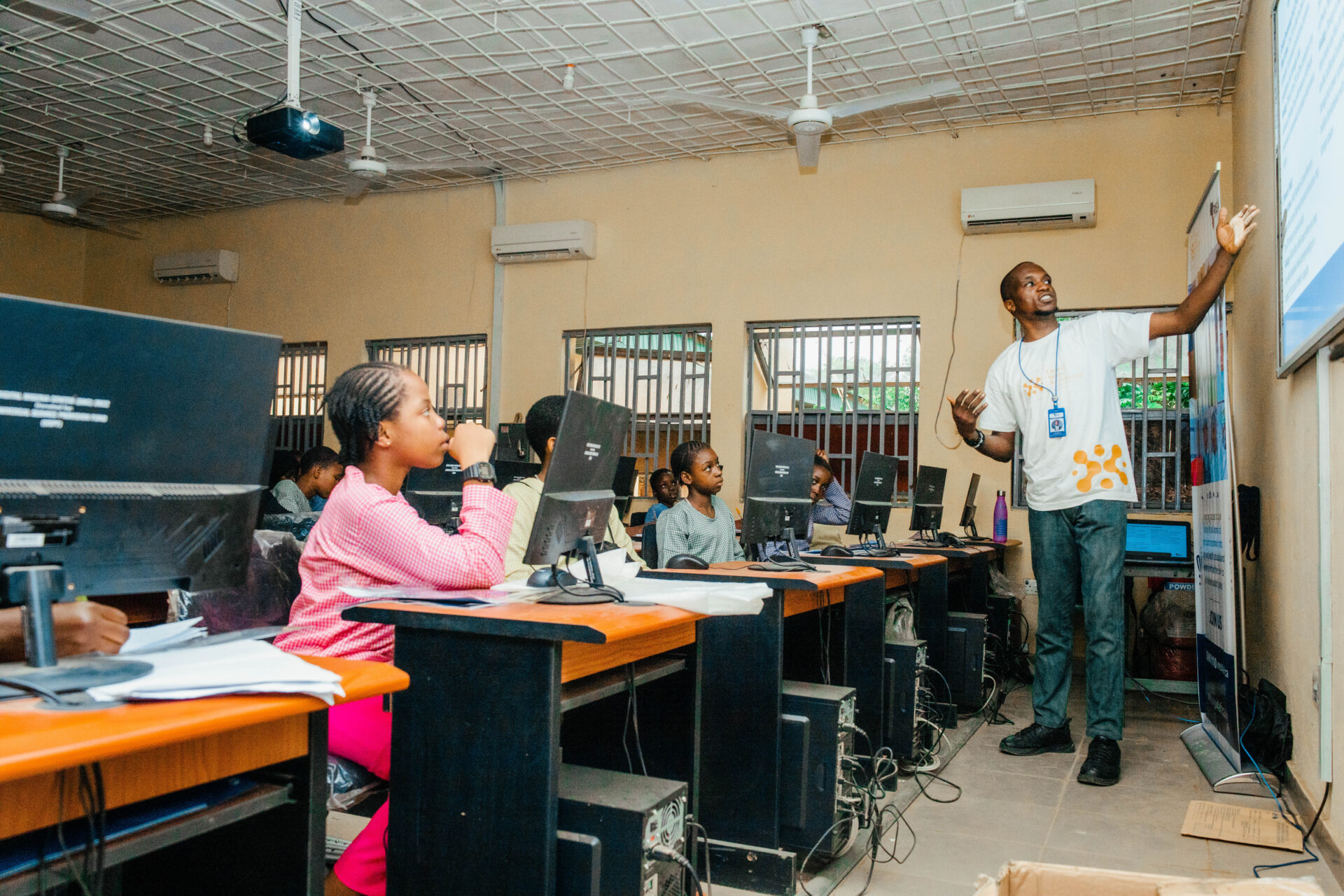
In today’s digital world, technology isn’t just a means to an end but has formed a big part of our daily life. It is commonly said that the illiterate of this generation is not necessarily the person who does not know how to read and write alone but the digitally illiterate one. If you look through this statement’s lens, it is not far-fetched from the truth. Our world is governed by technology and, more so, every facet of our lives, activities embedded with technological tools needed to improve our life pursuits.
In today’s world, over 90% of jobs worldwide already have a digital component, and most jobs will soon require sophisticated digital skills components. Unfortunately, by 2030, more than half of young people will not have the digital skills necessary for the future workforce. As the accelerated adoption of online learning continues and the use of digital technologies for daily activities becomes a norm, the apparent digital skills gap is having untold effects on the most marginalized population, especially women and adolescent girls.
The World Bank Blog states, “Gender equality and digital development are inextricably linked. Yet globally, men are 21 more likely to be digitally equipped than women, a figure that rises to 52% in low-income countries. The Web Foundation estimates that barriers that keep women and girls offline, high device and data costs, lower digital skills, and restrictive social norms, to name a few have cost developing countries about $1 trillion over the last decade”.
In my recent engagements as an organization at Aid For Rural Education Access Initiative with school authorities and education boards towards the implementation of our digital skills accelerator program for women and girls (DSA) towards our Basic Digital Skills Training for girls ages 13-18 years old, I have been asked countless times the question of why this program is focused on just the girls leaving the boys from the equation and this answers the question of the digital knowledge gap of young girls and women which needs to be bridged. Girls often has less access to technology and the Internet than boys and men.
Particularly in developing countries like Nigeria, girls and women struggle to afford technology and internet access. In addition, stereotypes around technology being ‘for boys’ and fear of being discriminated against stop girls from using digital tools.
Building Digital Equity is essential for improving digital skills, specifically for children in the Global South. This ensures that all children, regardless of their socioeconomic background, geographical location, or other barriers, can access the necessary resources, opportunities, and support to develop digital skills.
Digital equity ensures all individuals access digital tools, resources, and opportunities equally. For girls, particularly those in underserved and marginalized communities, achieving digital equity can be transformative, and in the long term, it plays a massive role in their development.
Here are a few benefits and pointers to how building digital equity can improve skills for girls:
Development of Digital Literacy: Ensuring girls have access to computers and the Internet allows them to learn essential digital skills, such as MS Word, Spreadsheets, and PowerPoint Presentations. Ensuring girls learn to effectively navigate the Internet, conduct research, and access information, which are critical skills in today’s digital age, would gradually build digital equity.
Access to Technology: Ensuring girls have access to laptops, tablets, and smartphones is essential. Without the necessary devices, they cannot develop or enhance their digital skills; reliable and affordable internet access is a cornerstone of digital equity, and providing broadband connectivity in underserved areas ensures that girls can access online resources and learning platforms and also expands broadband access, especially in rural and underserved areas, allows children to connect to online resources, educational platforms, and digital learning tools.
Curriculum Integration: One way to bridge digital equity is to integrate digital literacy into the curriculum, ensuring that all children receive structured, formal education in digital skills from an early age. Also, through this integration, students will be encouraged to participate in digital projects, such as coding or digital storytelling, which will help them apply digital skills in practical, real-world contexts and foster digital skills development.
Encouraging Innovation and Creativity: When digital equity is achieved, more people can access creative software and platforms, enabling them to experiment with and develop digital content. This access fosters innovation and helps individuals build skills in graphic design, video production, and digital storytelling; with equitable access to digital tools, people can create and share their content, enhancing their digital skills while contributing to a more diverse and vibrant digital ecosystem.
Safe Learning Environments: Digital equity ensures that individuals can access safe and supportive environments to learn and practice digital skills without fear of failure or judgment. This builds confidence and encourages continued learning.
User-Friendly Tools: Providing access to intuitive and user-friendly digital tools helps individuals feel more comfortable exploring and using new technologies, essential for developing digital skills.
Building digital equity is essential for improving digital skills across all segments of society. Digital equity initiatives empower individuals to develop the digital competencies needed to participate fully in the modern world by ensuring equal access to technology, education, and support. This benefits individuals and strengthens communities and economies by creating a more digitally skilled and inclusive society. Bridging the digital divide in Nigeria is not merely about access to technology but also about empowering individuals and communities to participate fully in the digital economy. One of the primary obstacles in bridging the digital divide in Nigeria is the uneven distribution of digital infrastructure.
Klingen, N. Hammond, A. and Srinivasan. S (2021). Putting women and girls at the center of digital development. Available from: https://blogs.worldbank.org/en/digital-development/putting-women-and-girls-center-digital-development [Accessed 28 August 2024]
Written by: Lucky Owoicho
Programme Associate.